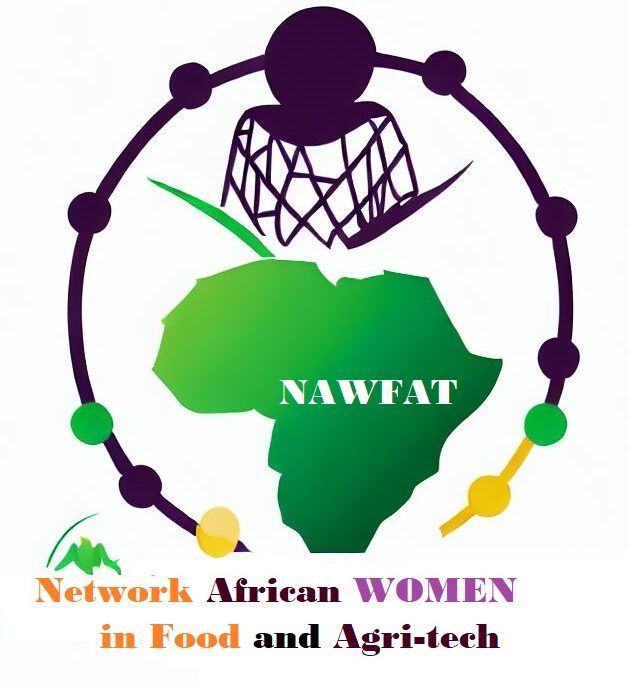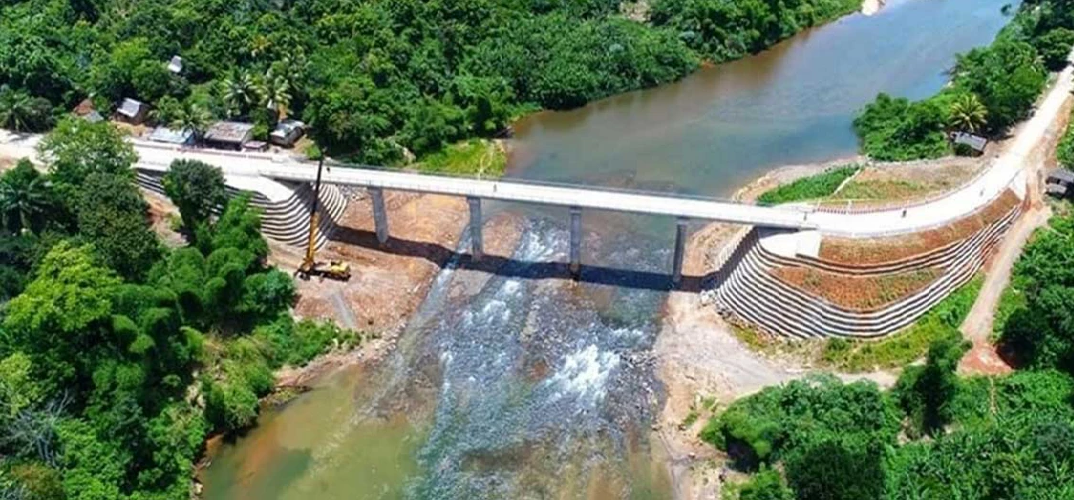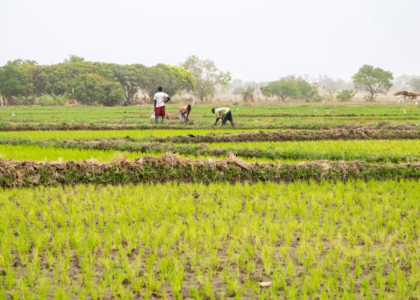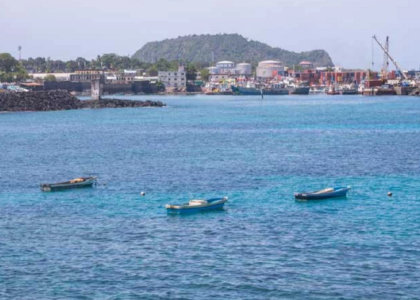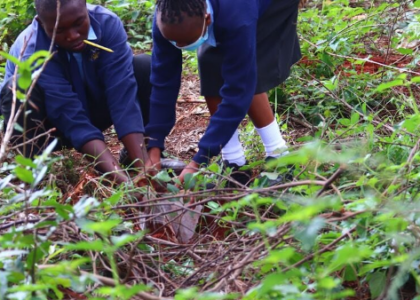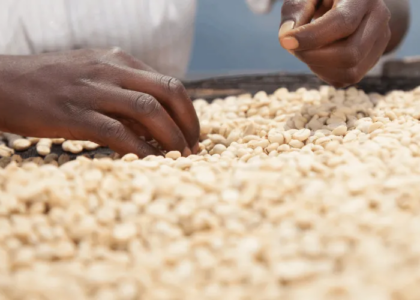“How can I produce more? How can I sell more of what I produce? Why invest in producing more and improving my land if I am not sure I can keep it?” These questions are never far from the minds of Malagasy farmers, many of whom are isolated and cut off from buyers downstream and, worst of all, lack any formal ownership of their land. For seven years, the Agriculture Rural Growth and Land Management Project (Croissance Agricole et Sécurité Foncière, CASEF) has responded by delivering three essential services to rural communities in Madagascar: income-boosting innovations, affordable land security, and better roads to market.
Reconnecting rural communities to markets
Spanning the upper Ivoloina river basin some 35 kilometers northwest of Madagascar’s port city of Toamasina, the Nosibe Bridge long served as a critical lifeline to lucrative export markets for thousands of cash crop farmers whose produce included cloves, coffee, pepper, cinnamon, lychees, vanilla, and others.
On March 7, 2004, Cyclone Gafilo buffeted the country’s eastern coastline with heavy winds and rains. Massive flooding ensued, severely damaging the bridge and uprooting communities across the Atsinanana region. Farmers on the far side of the river suffered most. They turned to “zahatra”—traditional bamboo pirogues—and makeshift barges to transship their produce across the river. Inevitably, marketed volumes plummeted, along with farmers’ incomes.
The situation improved in 2024, when the Government of Madagascar installed a new bridge to replace the old one. A complement to the newly rehabilitated 13-kilometer-long rural road, the bridge now spans 115 meters across the river basin and connects some seven inland communes and thousands of farming communities to Toamasina and markets beyond. “Yesterday, my bush taxi to Tamatave took less than three hours,” exclaimed local farmer Juliette Razafindratiana when we asked her what she thought about the new bridge. Before the new bridge was completed, the same trip to the nearby port city took a full day, or more, depending on the season, the river flow, and other factors.
Reconstruction of the Nosibe Bridge was financed by CASEF, a project of the Government of Madagascar that benefits from World Bank support. Launched in 2016, CASEF has funded the repair and reconstruction of three bridges and the rehabilitation of nearly 100 kilometers of rural roads along the island’s eastern coast and in the Central Highlands.
Although Madagascar is larger than France, its road density is among the lowest in the world, at 6.4 km per 100 km2 of land in 2011 (compared to 191.6 per 100 km2 in France). Only 6,000 kilometers of roads are paved out of a total of 32,000. The Rural Access Index, which measures the share of the rural population living within two kilometers of an all-season road, stands at 11%, again among the lowest in the world. This lack of infrastructure hinders many remote and isolated rural farming communities from accessing agricultural inputs and services and getting their products to market.
Poor roads undermine rural productivity, compromise farmer incomes, and contribute to rural poverty, according to the latest poverty assessment conducted by the World Bank. Improving infrastructure is key to help rural communities access input services and output markets. Better roads also make it easier and more profitable for them to sell their products, boosting their incomes and their profitability.
Just ask Rahim Yaly Mohamed, Mayor of Ambodiriana commune, where the newly constructed bridge rises high above the river valley. “Many local investors are now coming to our village to develop businesses, and the price of basic commodities is falling due to cheaper transportation costs,” he explains.
Securing affordable land rights for all
But boosting rural growth is not just about building better roads. The absence of secure land tenure across Madagascar weighs heavily on rural communities by reducing their incentives to invest, whether in land improvements, farming intensification, or other off-farm activities.
Since 2016, CASEF has also supported the Malagasy Government’s pioneering land reform which aims to make land ownership more accessible, especially for rural households. Land developed by farmers can now be registered quickly and inexpensively via a new official document, the land certificate, which is issued not by the central state but by new land offices at the commune level. To date, 1,050,000 land certificates have been issued to 400,000 households, and another 300,000 are under review. By June 2024, the project aims to secure a total of 1.39 million plots, with some 513,000 households benefiting. Madagascar’s pioneering reform has inspired other African countries, with delegations from as far as Burundi and Senegal coming to learn from Madagascar’s experience.
Delivering yield- and income-boosting innovations
Along with improving market access and securing land tenure, CASEF has helped farmers produce larger and better value-added output and earn higher revenue by delivering such productivity- and income-boosting innovations as improved seed varieties, tools, processing equipment, and practices. CASEF has also supported development of more diversified, more resilient livelihoods by promoting extensive tree-planting and improved husbandry for healthier and more sustainable ecosystems.
Since 2016, for example, communities have planted some 2.9 million cinnamon trees. By 2025, these new plantings are expected to boost Madagascar’s national output of cinnamon by more than 10%.
In the Mahanoro, Brickaville, and Soanieran Ivongo districts, CASEF has trained seven farmers’ associations on improved techniques for cinnamon cultivation, distillation, and drying. Eight traditional dryers and three high-capacity solar-powered dryers have been installed in the three districts. In addition, two stills for cinnamon bark essential oil production are generating new income streams for farming communities in the Ampasimbe, Manatsatrana, and Mahanoro districts.
“Equipment and training from CASEF allowed us to improve the quality of our cinnamon products,” beamed Monica, a young entrepreneur and farmer from the district of Brickaville. “Before, we sold one ton of unscraped cinnamon bark for 5 million ariary ($1,099). Today, we sell cinnamon sticks of the same quantity for 20 million ariary ($4,397). Our products are now also Bio-certified, so we can sell to niche export markets in Europe and the U.S.”
To sustainably boost rural growth, CASEF’s integrated approach has focused on boosting farmer access to three core elements— innovations, land, and markets. More and higher quality value-added products have put more income into farmers’ pockets. More secure land encourages improved land management and investments by farmers. Better connectivity means more accessible markets, more visibility and resilience, and higher farmer incomes.
In a country where over 80% of the population relies on agriculture, CASEF is bridging the divide and connecting rural communities to a more profitable, secure, and sustainable future.

